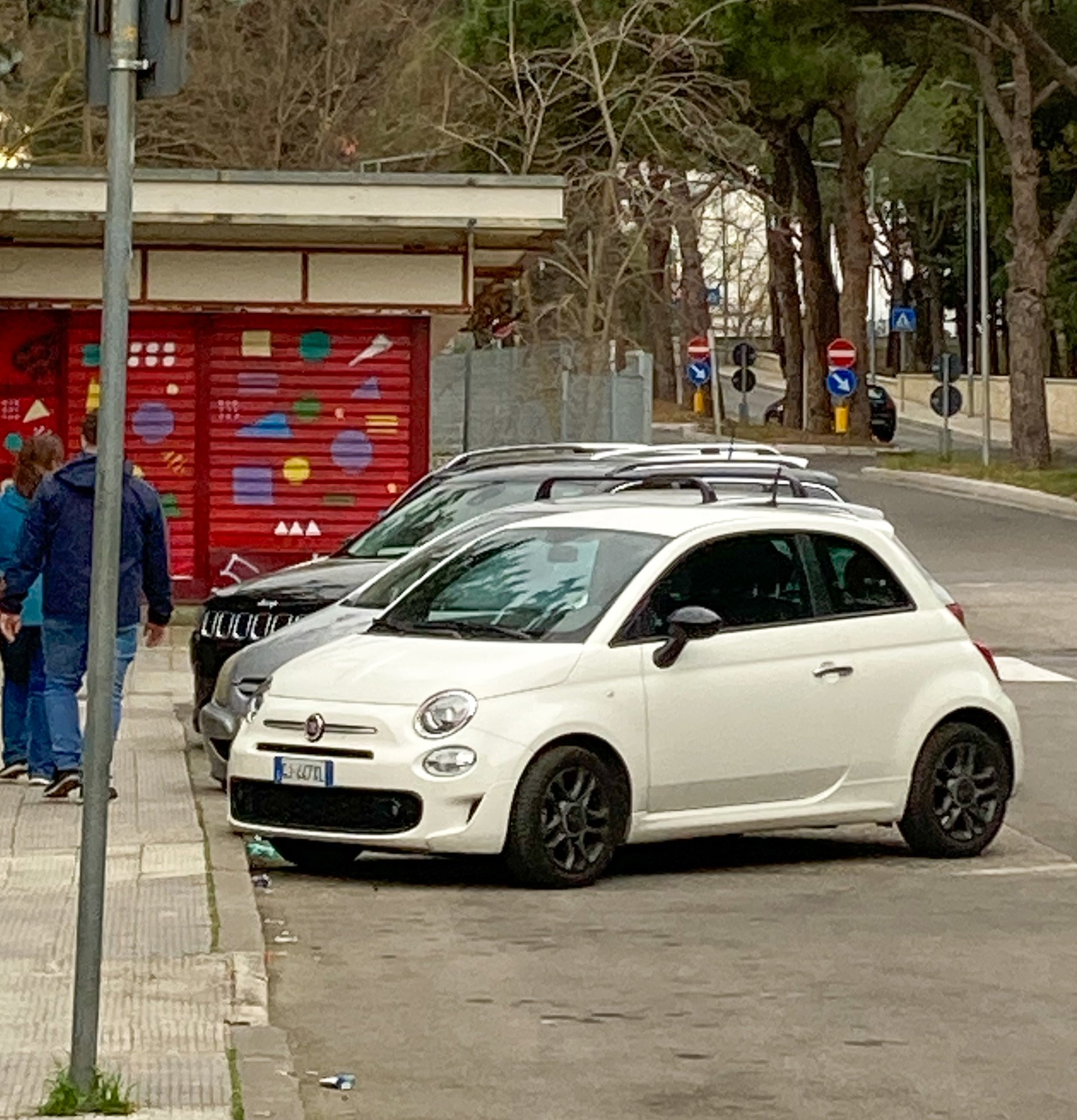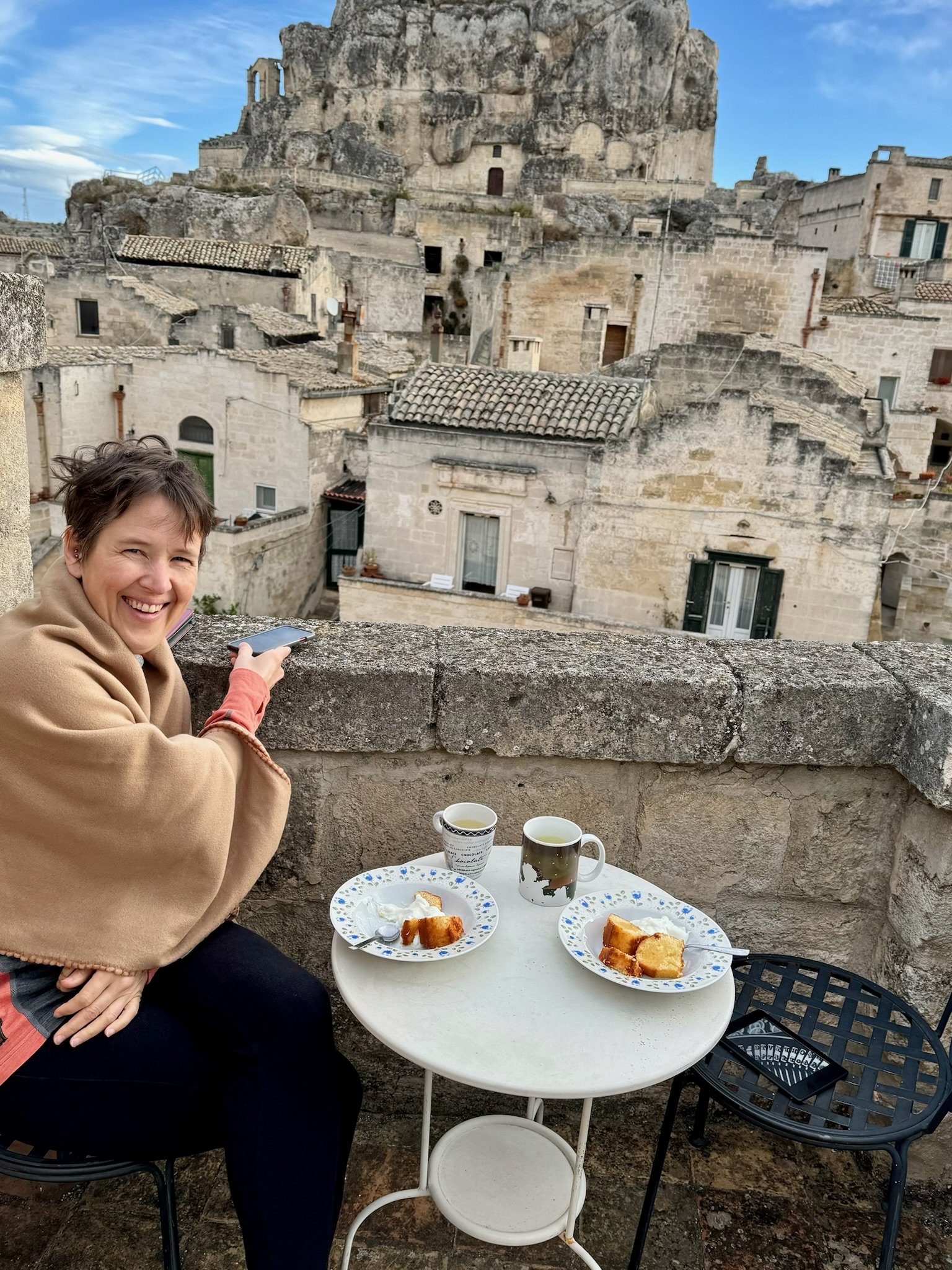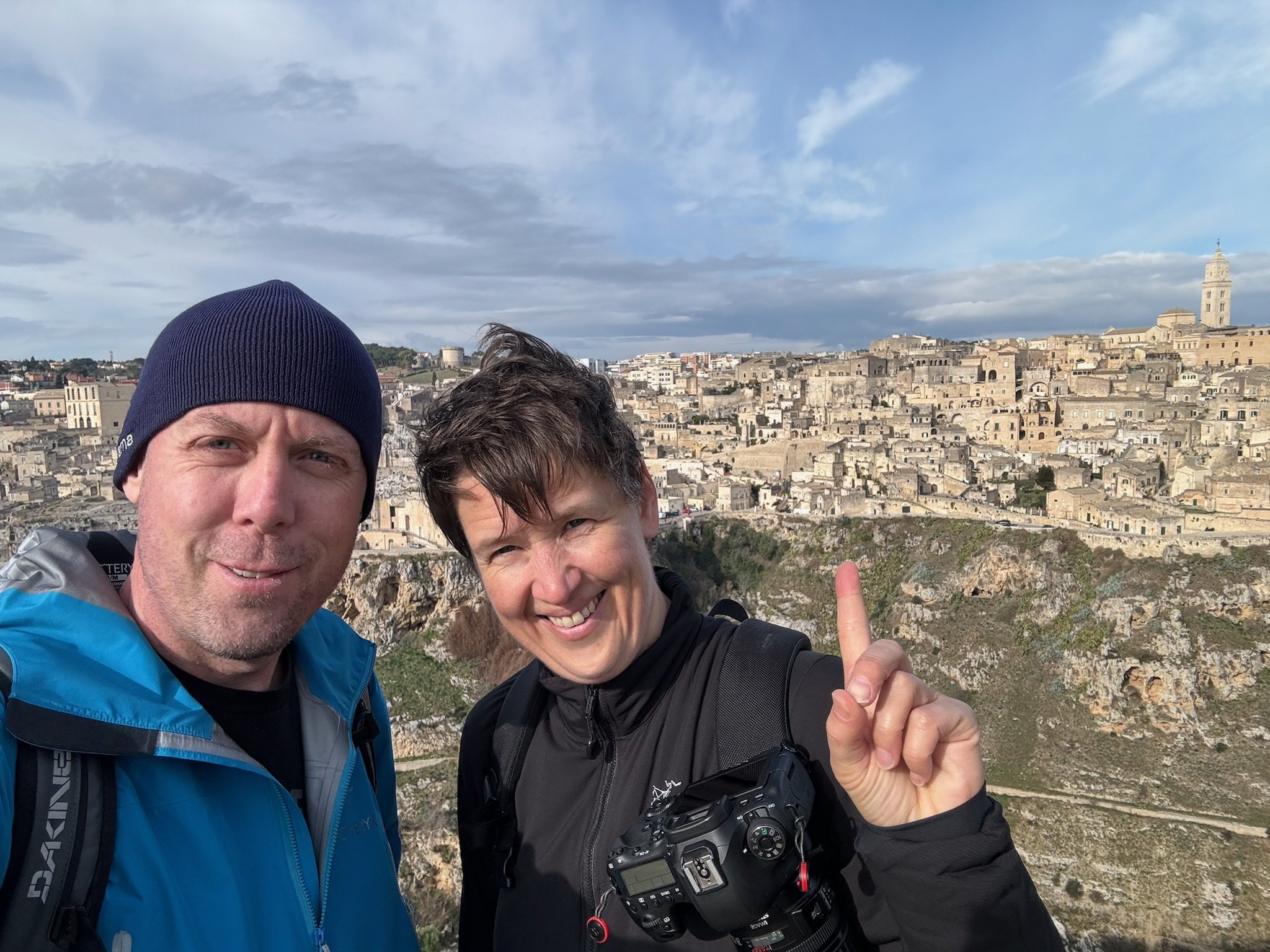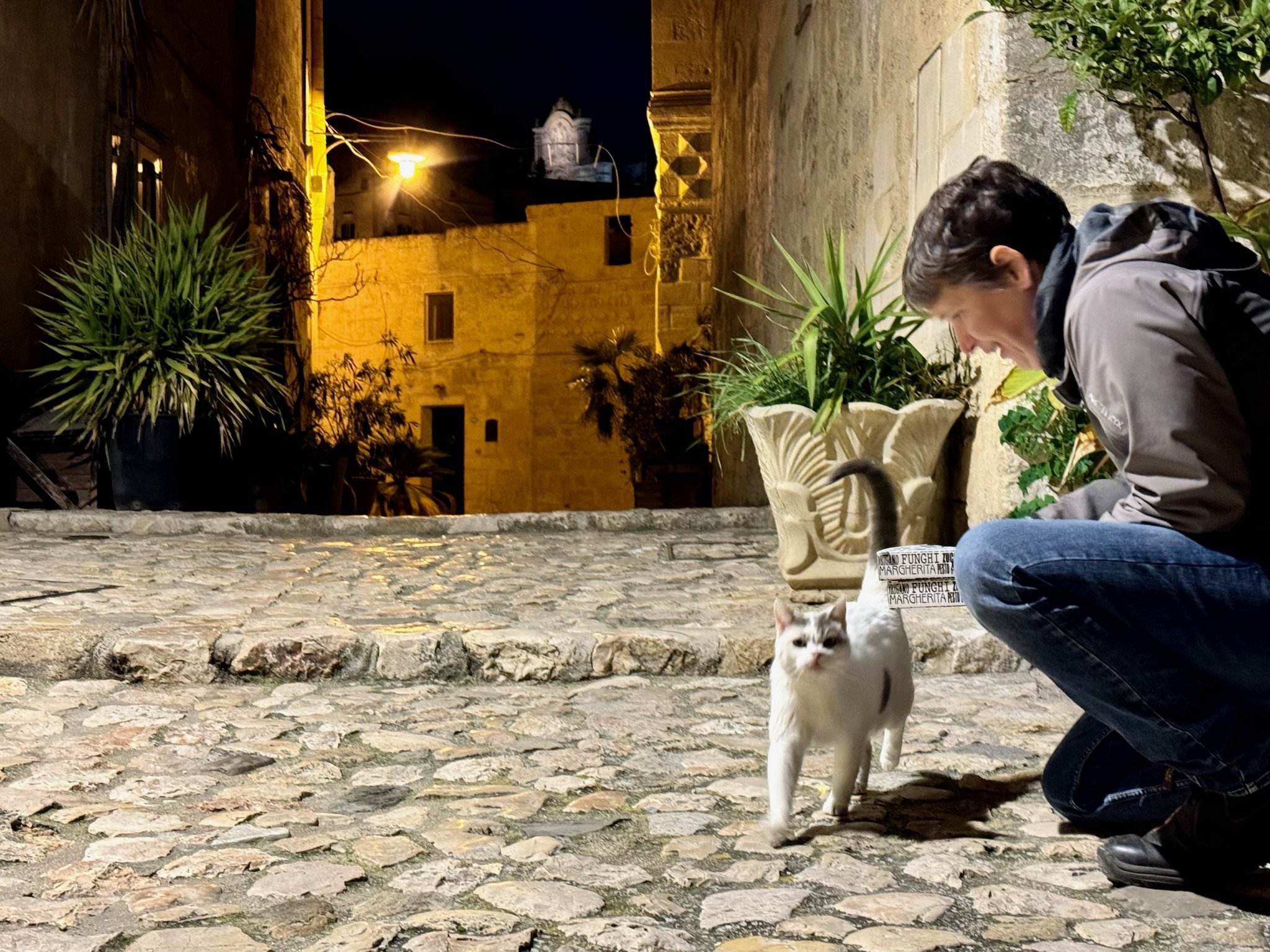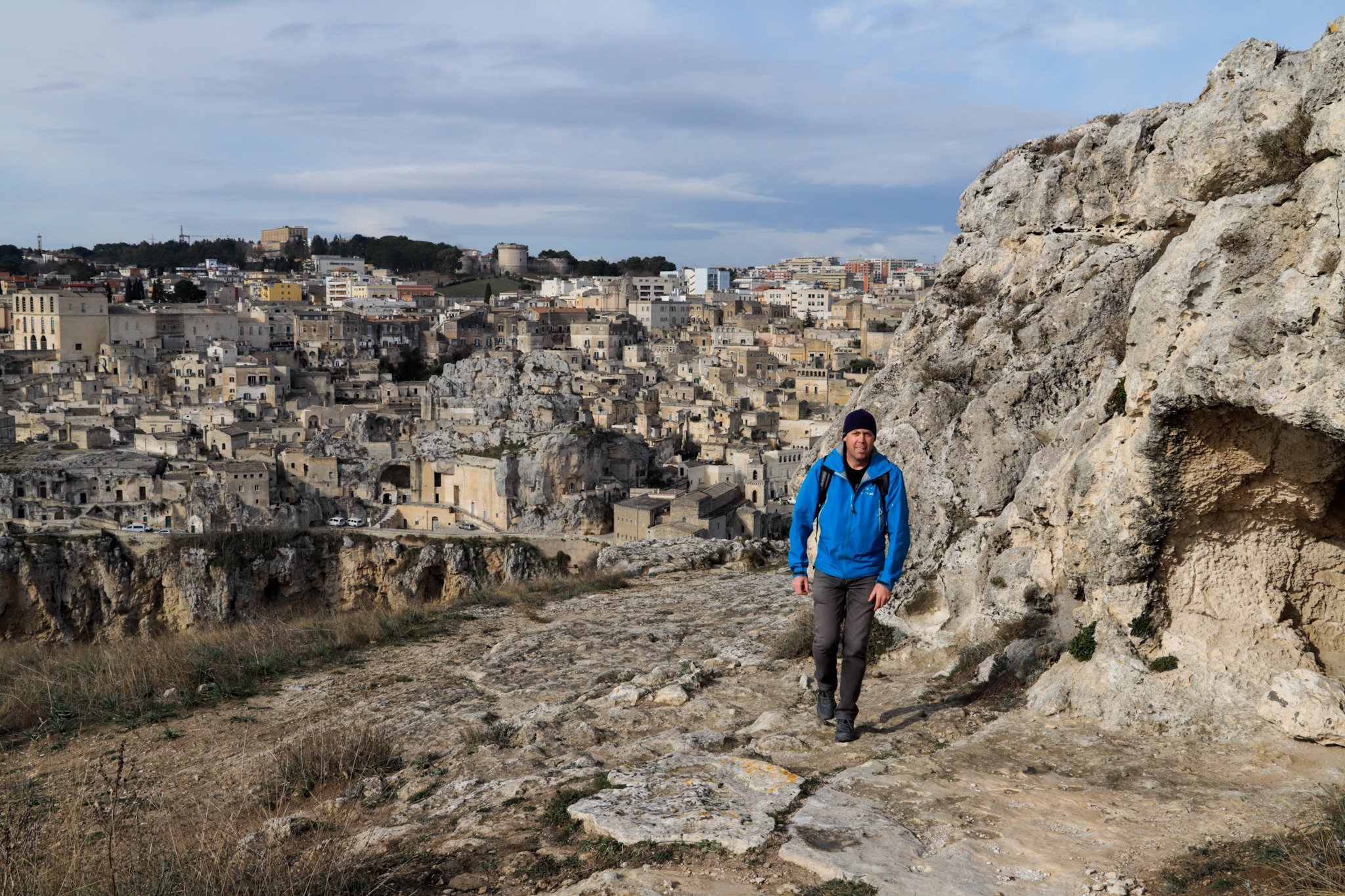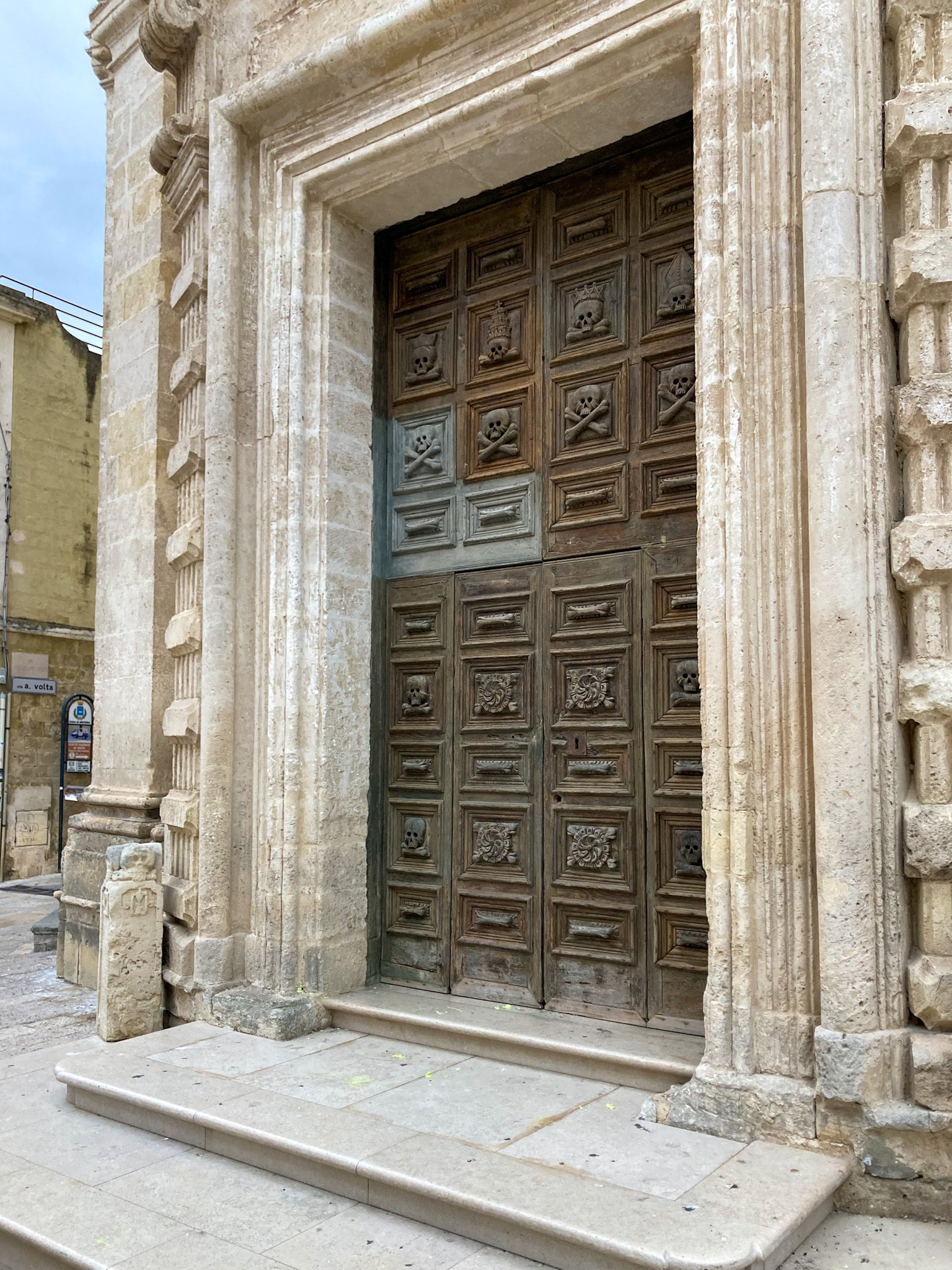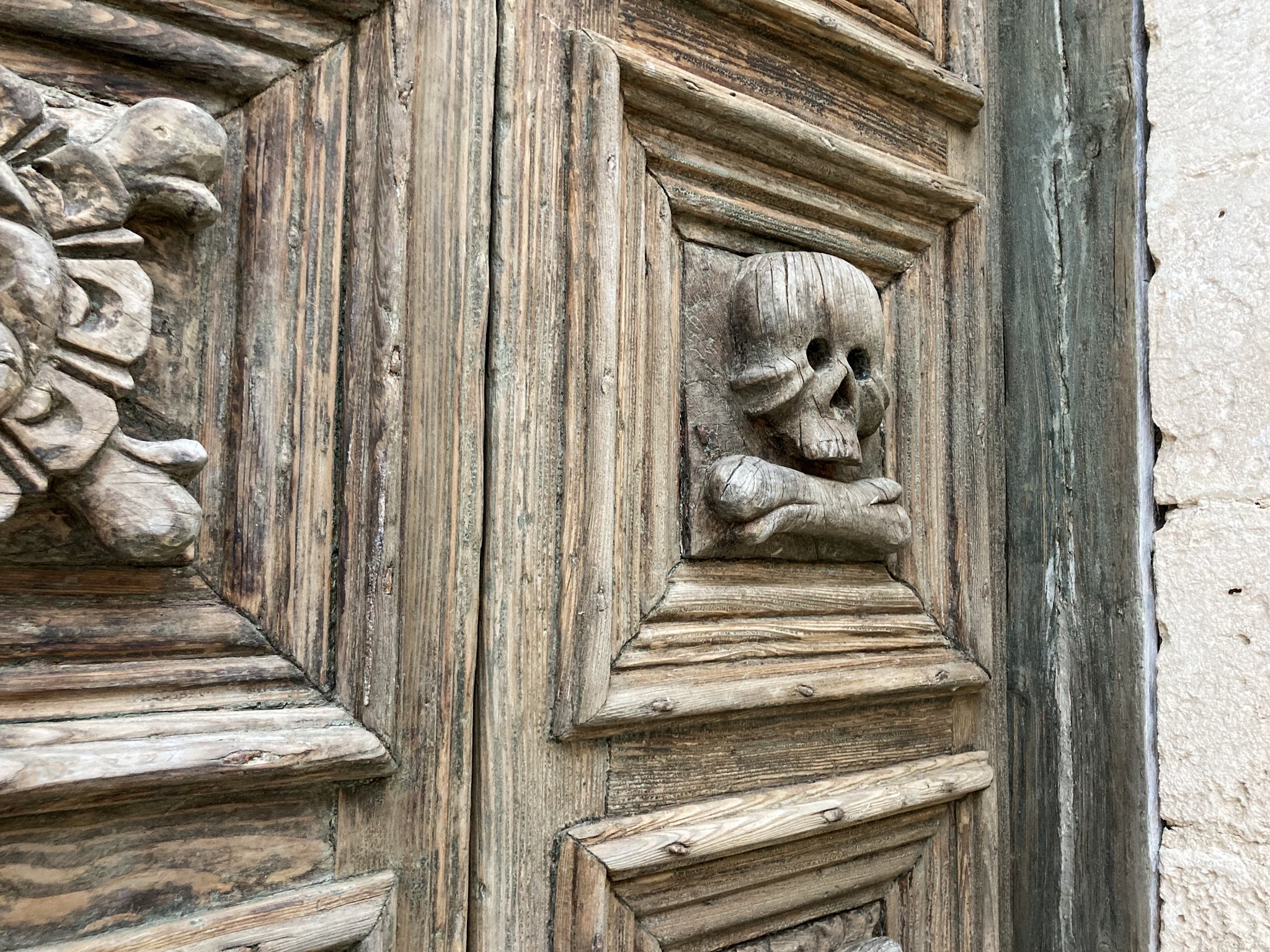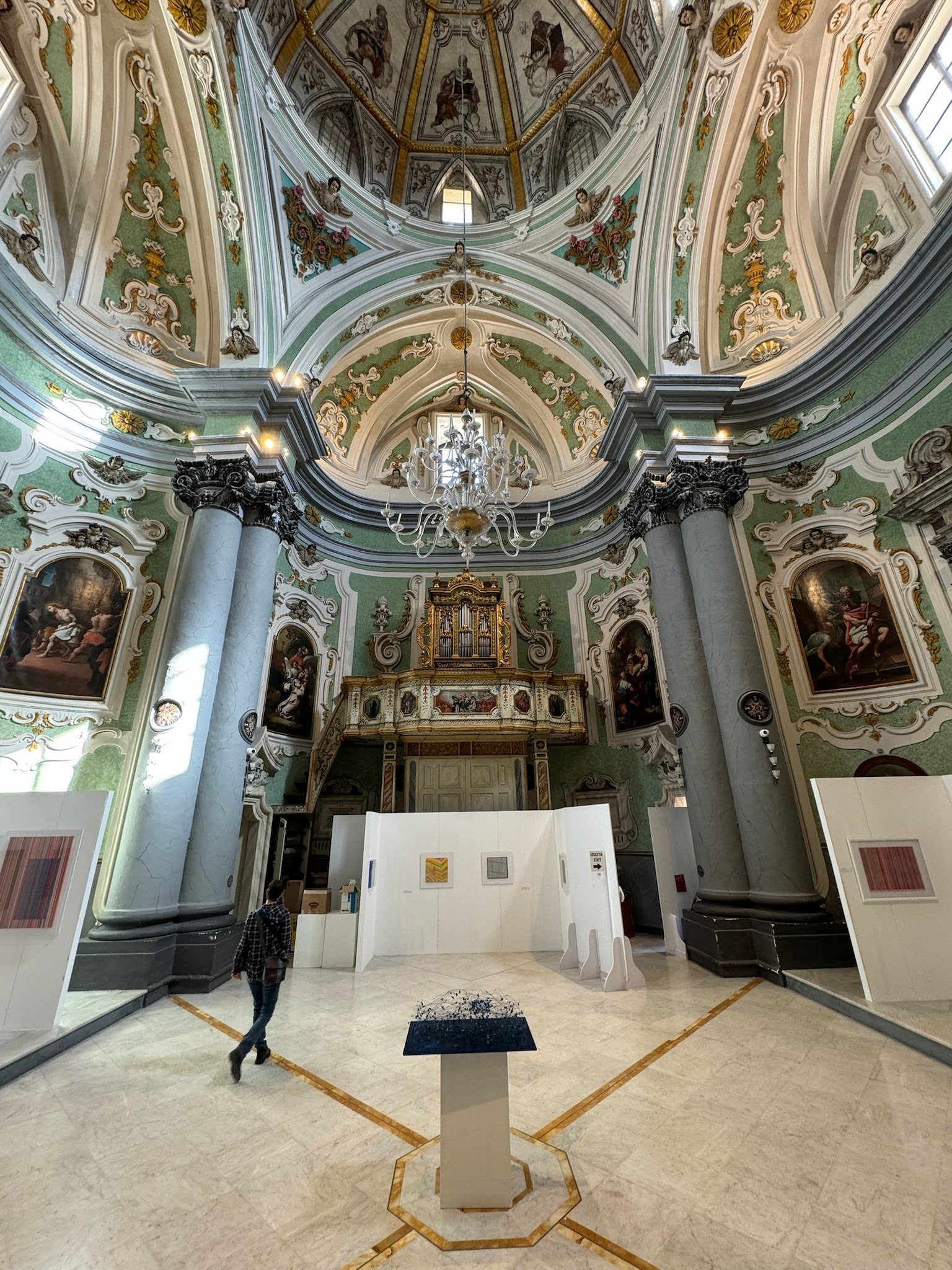We picked up our lil rental car in Salerno and drove inland to Matera through torrential rain. Matera is the third oldest city in the world, after Aleppo and Jericho, and is now famous for its Sassi - ancient houses dug into the rock. There is evidence of human occupation as early as 7,000 BC.
Matera gained a reputation as the shame of Italy due to the living conditions of thousands of poor people who occupied the ancient ruins and cave dwellings of the sassi area right up until the 1960’s. These people were living in single room dwellings in families of 10 people on average, and sharing this space with a couple small farm animals for food and most often a mule. The mule was a big thing. He was used for transport to and from the farm sites where the men worked every day, about 10 miles away, and also for said work. Additionally he was a welcome source of warmth in winter inside the damp stone dwellings. Unfortunately he was also the main source of disease for these people, as mules attracted hoards of malaria-carrying mosquitoes which wiped out many, many people every year.
Guys, this is the mid 1900’s. One neighbourhood, easy walking distance from the downtown of a very modern Italian city. Look it up if you don’t believe me, it’s truly fascinating.
Finally a few important people caught wind of the situation in Matera, and laws were passed and money was spent and all these people were relocated to housing projects close to the farmlands where they carried on working. They tried to do it right, by all accounts. There were the usual government men who ran the whole show, but there were also artists and creative types with influence whose hearts and minds were captivated by the lives and stories of these people. Perhaps most importantly, there was one woman: a psychologist from Bari who spent time with the people to learn their way of life and the communal living that was so important to them, with the goal of replicating that as much as possible in the transition.
Matera has a lot to say these days. It is proud of its efforts to relocate and help the poor inhabitants of these neighbourhoods, and of course many lives have been saved by improving the living conditions for these people. But of course not everyone would have gone happily or quietly. It has to be acknowledged that this was a forced relocation, however necessary, and those are never wonderful for all involved. This is some conjecture on my part, as the official story is different, but it feels fair.
The Sassi area was declared a UNESCO world heritage site in 1993, and has undergone a revitalization that is still very much underway. I’ll be very curious to see how it evolves and changes over the next little while. Right now it’s gorgeous, there’s amazing places to stay - including our wonderful AirBnB - great restaurants and cafes tucked away in caves, and beautiful stone streets to meander through. Genuinely, it’s a bit mind-blowing and feels like a very special and unique place. Highly recommend.
Also there’s this, the church of Purgatory. I mean, it was my first, is this a thing? Very interesting, just a weird lil church with skulls everywhere and bleak imagery…
Then we found a little museum dedicated to ancient olive oil production. This facility was unearthed with most of the equipment still in it. It’s entirely carved into the rock, and contains a small stable area for two or more mules so they could take turns running the big wheel grinder that made the olive paste. The big screw devices are the presses and are made entirely of wood.
Our awesome place - come on!
Me enjoying a lovely cocktail in the outdoor rock bar (not what that usually means) where we saw the Pegasus flying above us
This badass pizza oven makes good pizza


